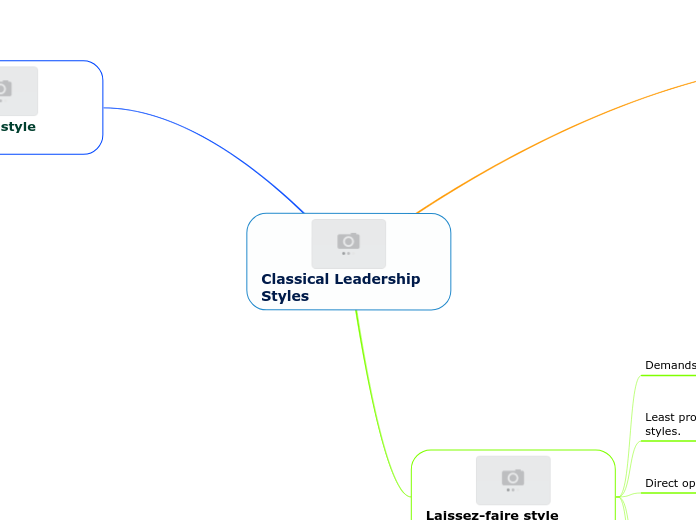
Classical Leadership Styles

Autocratic style leadership
One person controls all the decisions.
seen mostly in businesses which are relatively small with fewer employees.
provides clear directions and instructions to the team members.
The leader is usually a person of strong and decisive character and impose decisions with firmness.
The leader makes decisions based on her or his beliefs and doesn't listen to anyone else.
best for making decisions when there is no time for group decision making.
Can be too bossy at times.
The manager closely supervises his workers and wants to know every move they make.
How to deal with an autocratic leader:
- Never take it personally.
-- Avoid fights.
- Understand what motivates them..
Two main types of autocracy:
- dictatorship
- Monarchy
Examples include dictators like Adolf Hitler and Muammer Gaddafi.
doesn't involve the rest of the group with decision making.
effective in organisations where the nature of work requires quick decision-making.

Laissez-faire style leadership
Demands more than helps.
Team members have poorly defined roles and lack motivation.
workers might not be protected from unsafe workplaces.
Least productive of all three styles.
can result in poor crisis management.
A company or organization with this type of leadership style might sell fake items or not sufficiently safe products.
Direct opposite of Autocratic.
Employees make their own decisions, no micromanagement.
Leader doesn't make all decisions for the organization.
Advantages:
- promotes personal growth
- faster decision-making(less time consuming)
- promotes creativity and innovation.
laissez-faire is a French term that translates as "leave alone" (let you do).

Democratic style leadership
A type of leadership style in which members of the group take a more participative role in the decision-making process.
The leader is a good communicator, listener and has a positive attitude.
Focuses on collaboration.
Leaders using this method actively seek input from their team members.
Rely more on listening than directing.
employee job satisfaction.
Most effective leadership style
This style of leadership can be developed by involving the team members in more problem solving and decision making.
Team members are more motivated.
encourages a more creative environment.
Cons:
- Processing decisions is time consuming.
- Uses up a lot of time.
